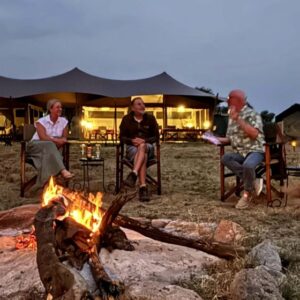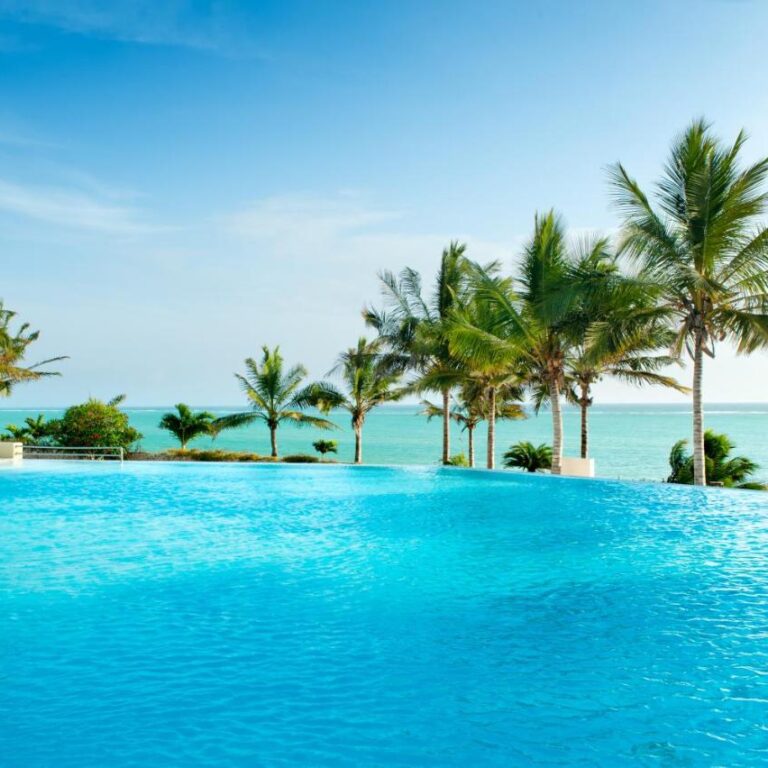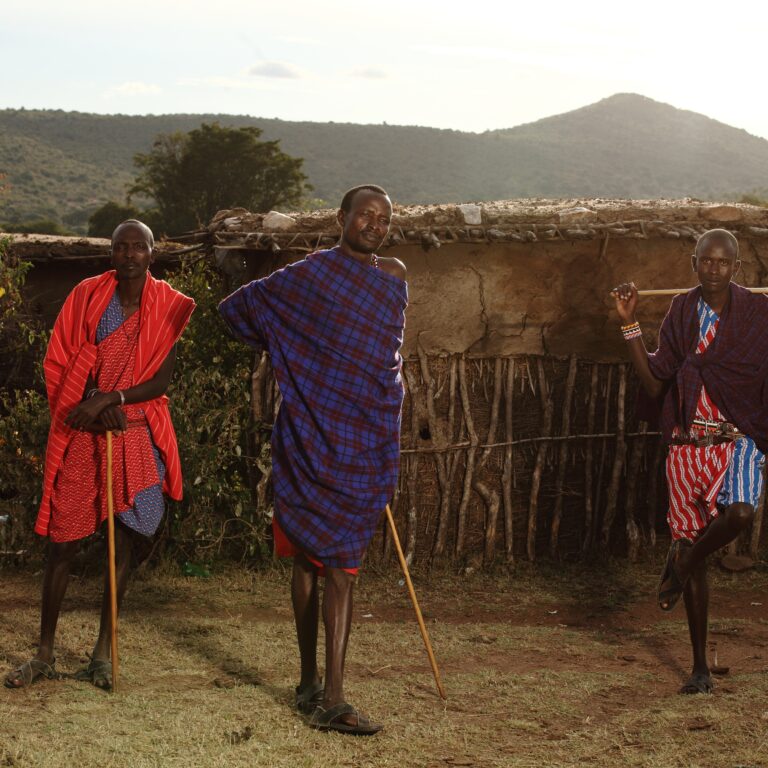Tanzania is widely known for its majestic wildlife and towering peaks, with Mount Kilimanjaro being the crown jewel of African climbs. However, there’s another hidden gem that attracts mountaineers seeking a slightly more challenging and less crowded alternative—Mount Meru. Located within Arusha National Park, Mount Meru stands at 4,566 meters (14,980 feet) dormant stratovolcano, making it the second-highest peak in Tanzania. Whether you are a seasoned climber or someone looking for an unforgettable adventure, summiting Mount Meru offers an experience filled with stunning landscapes, diverse ecosystems, and a sense of accomplishment. This guide will walk you through everything you need to know to prepare for an unforgettable climb.
Nestled in the heart of Tanzania, Mount Meru stands as a majestic challenge for both seasoned climbers and aspiring adventurers. Rising to an impressive 4,562 meters, this dormant stratovolcano presents a rewarding experience that combines breathtaking scenery, rich biodiversity, and a palpable sense of adventure. This guide aims to provide you with everything you need to know for a successful ascent of Mount Meru, ensuring you’re well-prepared for the journey ahead.
Why Climb Mount Meru?
Before we dive into the specifics, let’s understand why you should consider climbing Mount Meru over its more famous sibling, Kilimanjaro. While Kilimanjaro offers a higher elevation, Meru is often considered a more technical climb. It’s also less crowded, offering a more peaceful, intimate experience with nature. The trek takes you through lush rainforests, alpine meadows, and barren volcanic landscapes, all while offering spectacular views of Mount Kilimanjaro from various vantage points.
Moreover, climbing Mount Meru provides a great way to acclimatize to higher altitudes if you’re planning to summit Kilimanjaro afterward. It serves as an excellent prelude for those aiming to tackle the “Roof of Africa” while giving climbers an appreciation for Tanzania’s breathtaking natural beauty.
Getting to Mount Meru
Mount Meru is located in Arusha National Park, about 30 kilometers (19 miles) from Arusha town, a bustling city that serves as the gateway to several Tanzanian safaris and mountain adventures.
✔Flying: If you’re coming from abroad, most international flights land in Kilimanjaro International Airport (JRO), which is about a 1-hour drive from Arusha. Alternatively, there are smaller domestic airports closer to the park, but JRO is the most commonly used entry point.
✔Ground Transport: Once in Arusha, you’ll need to hire a private vehicle or join a group to take you to the park’s entrance. Travel time from Arusha to the park entrance typically takes around 1.5 to 2 hours, depending on road conditions and traffic.
Research and Planning
Understanding the mountain’s terrain, weather patterns, and climbing routes is crucial. Mount Meru features several routes, with the most popular being the Momella Route, which considered the easiest. The Meru Crater Route offers a more challenging ascent and recommended for experienced climbers. Determine your skill level and choose a route that suits your capabilities.
Best Time to Climb Mount Meru
The best time to climb Mount Meru is during the dry seasons, which are from June to October and December to February. During these months, the weather is more predictable with minimal rainfall and clearer skies, making for more enjoyable trekking conditions. While climbing in the rainy season (March to May) is possible, it’s generally not recommended due to slippery trails and the chance of storms.
Mount Meru Climbing Routes
There are multiple routes to summit Mount Meru, but the most popular and commonly used is the Momella Route. This route offers a scenic and relatively straightforward climb, taking adventurers through diverse ecosystems with a steady ascent the ultimate guide to Climbing Mount Meru. It’s the only officially recognized route for climbers the ultimate guide for climbing Mount Meru. The most popular route is the Momella Route, which takes you through lush forests filled with diverse flora and fauna. This route typically has several itineraries, including: Here’s an overview of the
✔4-Day Itinerary: A shorter option that covers the essentials without extra acclimatization.
✔5-Day Itinerary: This version allows for better acclimatization, making it more suitable for those seeking a more leisurely climb.
Both itineraries provide ample opportunities to enjoy the stunning scenery and wildlife along the way.
What to Expect on the Trail Mount Meru climb:
Expect to be challenged, but also rewarded with some of the best views in Tanzania. The early mornings are cold, often requiring warm clothing during your ascent. Nights spent in cozy mountain huts or tents offer a chance to share stories with fellow climbers.
✔Day 1: Momella Gate to Miriakamba Hut
Elevation Gain: 1,500 meters (4,921 feet)
Distance: 10 km (6.2 miles)
Trekking Time: 4-5 hours
After entering Arusha National Park at Momella Gate, climbers begin their ascent. The trek starts in the lush, green forests of the lower slopes, home to diverse wildlife like giraffes, buffaloes, and various bird species. The climb gradually becomes steeper as you ascend toward the Miriakamba Hut. Along the way, the views of the Momella Lakes below are mesmerizing.
You will spend the night at the Miriakamba Hut, which offers basic facilities such as bunk beds. A small kitchen, and dining area the ultimate guide to Climbing Mount Meru. This hut sits at an elevation of about 2,514 meters (8,250 feet), giving you a solid first day of climbing without overexerting yourself.
✔Day 2: Miriakamba Hut to Saddle Hut
Elevation Gain: 1,100 meters (3,609 feet)
Distance: 8 km (5 miles)
Trekking Time: 4-5 hours
On Day 2, the landscape transitions from forest to alpine meadows as you continue to climb toward Saddle Hut, located at 3,570 meters (11,713 feet). The terrain becomes more barren, with volcanic rock and shrubland dominating the surroundings. Along the way, there are stunning views of the crater’s rim and Mount Kilimanjaro to the north.
This an important acclimatization point, climbers encouraged to take it easy and rest to prepare for the final summit push. The Saddle Hut offers basic facilities, and climbers typically rest for the night here.
✔Day 3: Saddle Hut to Summit and Return to Saddle Hut
Elevation Gain: 996 meters (3,268 feet)
Distance: 6 km (3.7 miles)
Trekking Time: 8-10 hours
Summit day begins early—usually around 2:00 AM—so you can reach the summit at sunrise. The final ascent is a challenging trek that involves a combination of rocky paths and loose scree. The climb is steep and often involves scrambling, especially toward the top. However, the reward at the summit is worth every step.
At 4,566 meters (14,980 feet), the views from the summit are nothing short of spectacular. You will be treated to panoramic vistas of the surrounding landscape. Including a clear view of Mount Kilimanjaro to the east and the crater of Mount Meru itself. The sunrise from here is a moment you will never forget.
After spending some time soaking in the views, you will descend back to the Saddle Hut for the night. This descent is steep but relatively quick, taking approximately 4-5 hours.
✔Day 4: Saddle Hut to Miriakamba Hut and Down to Momella Gate
Distance: 15 km (9.3 miles)
Trekking Time: 6-7 hours
The final day of your climb spent descending back to the park’s entrance at Momella Gate. While the descent easier than the ascent. It can still be hard on your knees and legs due to the steepness of some sections. The lush forests and wildlife sightings along the way make for a pleasant and relaxing end to the trek.
What to Pack for the Mount Meru Climb
When preparing for your climb. It’s essential to pack appropriately to ensure both comfort and safety. Here’s a packing list for Mount Meru:
✔Clothing: Layered clothing is crucial, as the weather varies with altitude. Pack lightweight, moisture-wicking base layers, and a warm fleece. Down jacket, a waterproof outer shell, and a hat and gloves for cold nights.
✔Footwear: Proper trekking boots with ankle support are vital for the rocky terrain. Make sure they are well broken in to avoid blisters Mount Meru Climbing Guide.
✔Accessories: Sunglasses, sunscreen. A hat and a neck gaiter or scarf will protect you from the sun and wind at higher altitudes the complete Mount Meru climbing guide.
✔Other Gear: A good-quality sleeping bag (comfortable for temperatures as low as 0°C/32°F). A headlamp with extra batteries, and a first aid kit. A water bottle or hydration system, and high-energy snacks like nuts and chocolate are all necessary for the journey.
✔Technical Gear: Depending on the time of year and the conditions. A trekking pole, a rain poncho, and gaiters may also be useful Mount Meru, Tanzania everything you need to know.
Fitness and Acclimatization
Mount Meru challenging climb, though not as demanding as Mount Kilimanjaro. However, it’s still crucial to prepare your body for the physical exertion required. Ensure you engage in cardiovascular exercises like hiking, running, or cycling for several months before your trip. This will improve your stamina and endurance. Also, Climbing Mount Meru requires a good level of fitness. Begin a training regimen at least three months in advance, focusing on cardiovascular strength, endurance, and leg strength. Incorporating hikes with elevation gain will particularly prepare your body for the climbs ahead.
Acclimatization another key factor in successfully summiting Mount Meru. While the climb is relatively short, it’s essential to take things slowly, especially during the ascent to Saddle Hut. Altitude sickness is a real concern, so listen to your body and report any symptoms Climbing Mount Meru, Tanzania the ultimate Guide. Such as headaches, dizziness, or nausea to your guide immediately.
Safety Tips for Climbing Mount Meru
Climbing Mount Meru requires a licensed guide, as the route is technically challenging and the park is a protected area. Guides are not just there to lead the way; they provide crucial safety, support, and information about the region’s flora and fauna. Some porters will assist with carrying your gear, ensuring that you have everything you need for the trek.
It’s important to choose a Foot Slopes Tours and Safaris Mount Meru climbing reputable tour operator who employs certified guides. While the trek is not overly dangerous. Having an experienced guide with you increases your chances of a successful and safe summit.
Mount Meru Weather and Temperature
The weather on Mount Meru can be highly variable. At lower elevations, it may be warm and humid, but temperatures drop significantly as you gain altitude. Expect cold nights and possible snowfall on higher elevations. It’s crucial to check weather forecasts before your climb and be prepared for changing conditions.
Mount Meru Climbing Cost
The cost of climbing Mount Meru can vary significantly based on the itinerary, guide services, and park fees. On average, you can expect to pay between $1,000 to $1,500 for a complete package, which typically includes guiding services, porters, park fees, and accommodation. It’s wise to budget for additional items like gear rental, tips for your guide and porters, and other personal expenses.
Wildlife
Mount Meru is home to a rich variety of wildlife, including black and white colobus monkeys, various antelope species, and over 300 bird species. Keep your eyes peeled while trekking, as the forested paths often bring you close to these beautiful creatures.
Mount Meru Weather and Temperature
The climate on Mount Meru varies with altitude. Lower slopes are typically warm and humid, while upper sections can reach temperatures below freezing. Expect daytime temperatures ranging from 10°C to 20°C (50°F to 68°F) at the base, dropping significantly as you ascend.
Tips for Climbing Mount Meru
✔Physical Preparation: Start a training regimen well in advance the ultimate guide to Climbing Mount Meru. Incorporate cardio, strength training, and hiking to build endurance.
✔Stay Hydrated and Nourished: Carry sufficient water and energy snacks. Proper nutrition is crucial for maintaining energy levels during the hike.
✔Pack Wisely: Bring layers for varying temperatures, as conditions can change rapidly. Essential gear includes a good pair of hiking boots, warm clothing, and a reliable sleeping bag.
Final thought
Climbing Mount Meru an unforgettable experience that promises breathtaking views, challenging terrain, and a sense of achievement. The trek is less crowded than Kilimanjaro, offering a more intimate encounter with Tanzania’s stunning landscapes. Whether you’re testing your mountaineering skills, or acclimatizing for Kilimanjaro. Simply seeking a unique adventure, Mount Meru has something special to offer the ultimate guide to Climbing Mount Meru. With proper preparation, determination, and the help of expert guides. The summit of Mount Meru awaits you, ready to reward your effort with unforgettable vistas and memories to last a lifetime.








